
9 minute read
The Annual Stallion Issue of The Plaid Horse February 2023
WORDLEY MARTIN
The Arena and Footing Experts on How to Maintain Your Riding Arena

Even footing of the highest quality will not perform to that standard without the right maintenance

WORDS: AMANDA PICCIOTTO FEITOSA / JUMP MEDIA
REGARDLESS OF DISCIPLINE, the maintenance of your arena can make the difference between a premium riding surface and subpar footing. Watering, dragging, and annual upkeep are all common practices, but the nuance of getting it all just right takes a more advanced understanding. International Grand Prix riders Sharn Wordley and Craig Martin have competed in arenas at top venues across the globe, gaining a strong sense of the best footing available. They’re sharing their expert advice on keeping your arena in tip-top shape based on their vast experience as riders and co-founders of arena design and equestrian surfaces company Wordley Martin.
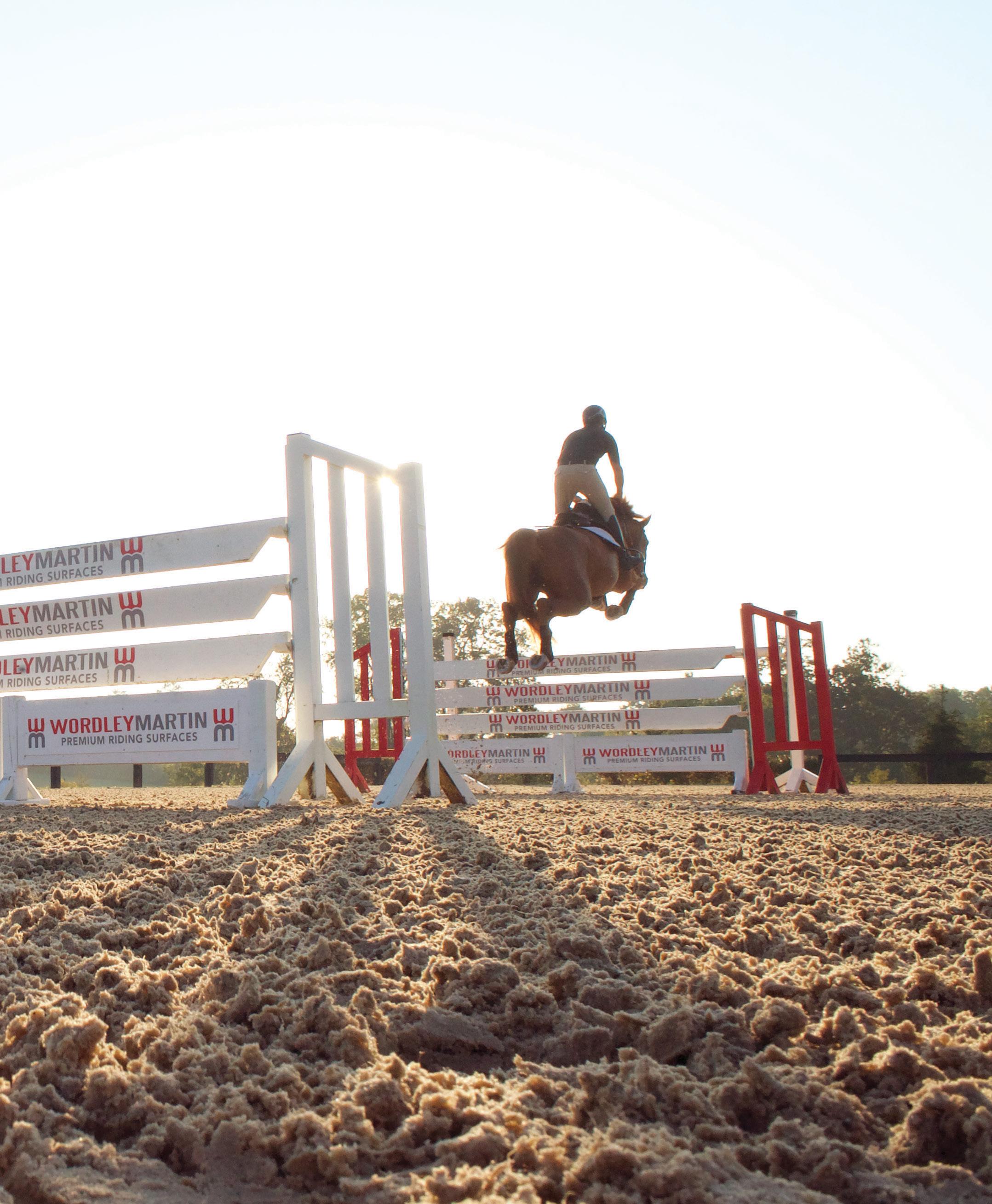
CATCH UP WITH THE FIRST ARTICLE IN THIS SERIES ON ARENAS AND FOOTING IN THE DECEMBER 2022/JANUARY 2023 ISSUE OF THE PLAID HORSE.
PHOTO: MEGAN McDERMOTT
February 2023 THE PLAID HORSE
FOOTING
Quality footing is an essential component of every ride, helping keep horses sound and happy. It’s the footing itself that supports each footfall of the horse, so starting with a high-caliber sand mixture, which both gives to and holds up to impact, helps ensure a smooth ride. Soundness issues tend to crop up as a result of missteps or slips, which can happen when the horse sinks into the footing more on one step than it did on the previous one. Having consistent quality footing throughout the arena mitigates those circumstances.
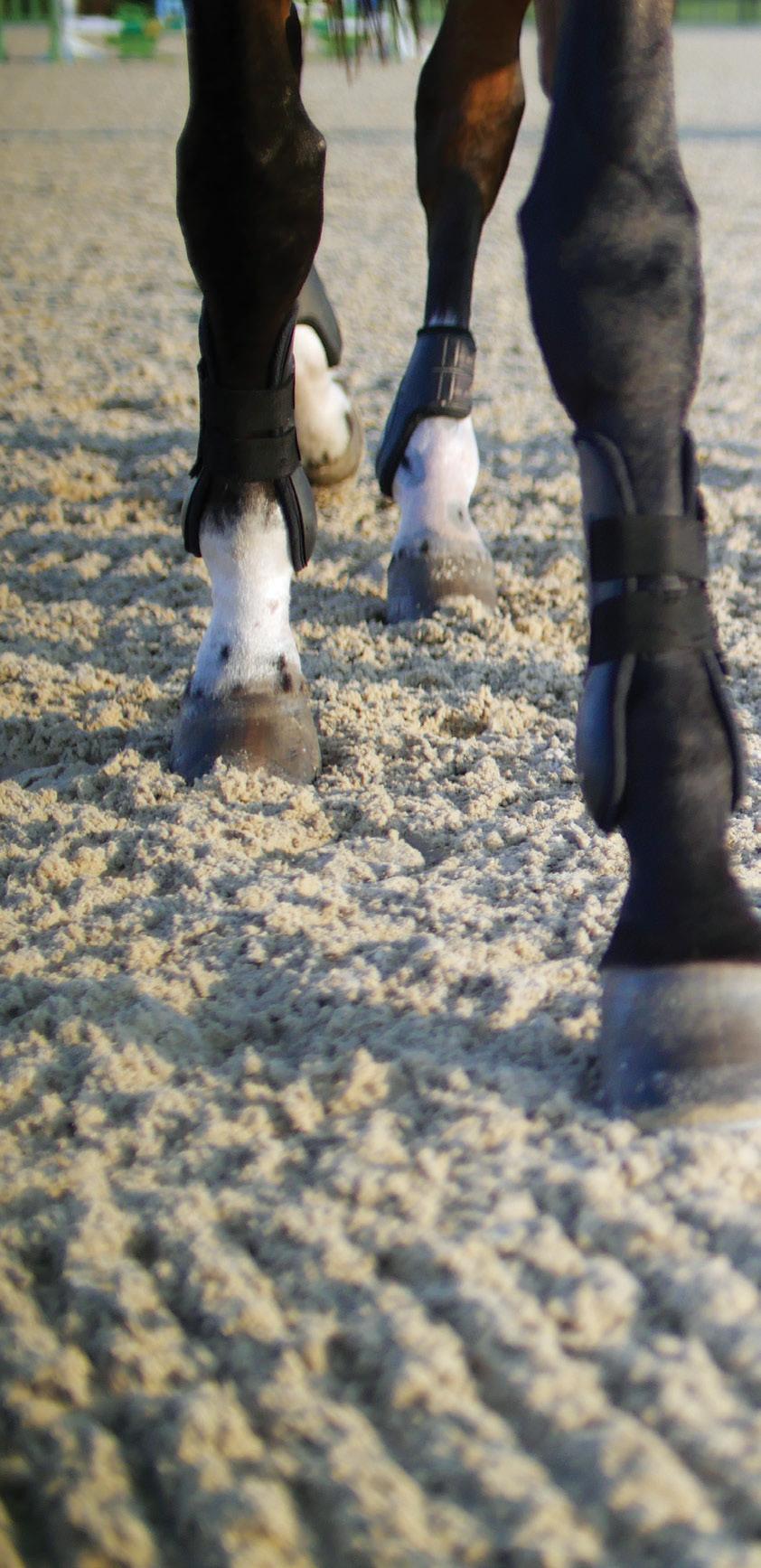
“For all footing, it doesn’t matter what it is, there are a few key factors that create injury, which are that the footing is either too hard, too soft, or too inconsistent,” says Wordley, an Olympian who rides for New Zealand internationally. “Those are what mainly cause injury. No matter whether it’s grass or any kind of sand footing, you’re looking for the right balance of concussion and consistency. You want the footing to be firm enough that the horse can train without slipping but soft enough to cushion impact.”
Of course, having quality footing is just the start. A superstar horse only performs at its peak with proper training, and similarly, even the best footing only performs at its best with proper maintenance.
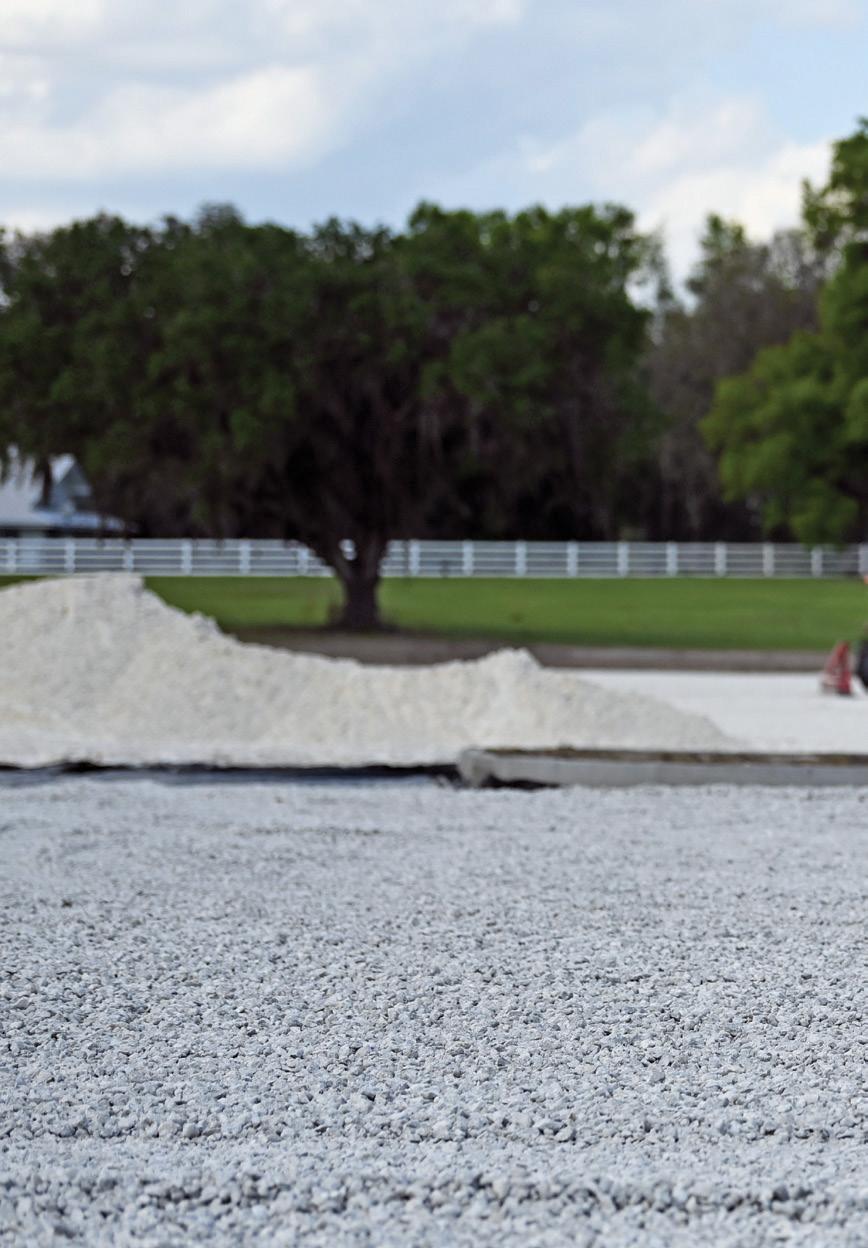
WATERING
The right moisture level is essential for optimal footing texture, meaning it is important to add water when the footing is too dry and loose and equally important to be able to drain away excess water. Some irrigation systems spray water over the top of the arena and have a drainage system that allows excess water to flow out. Other arena set-ups add water from underneath the footing like how a giant bathtub fills from the bottom, raising and lowering the water level as needed through an ebb-and-flow system. In any case, watering the arena evenly is key.
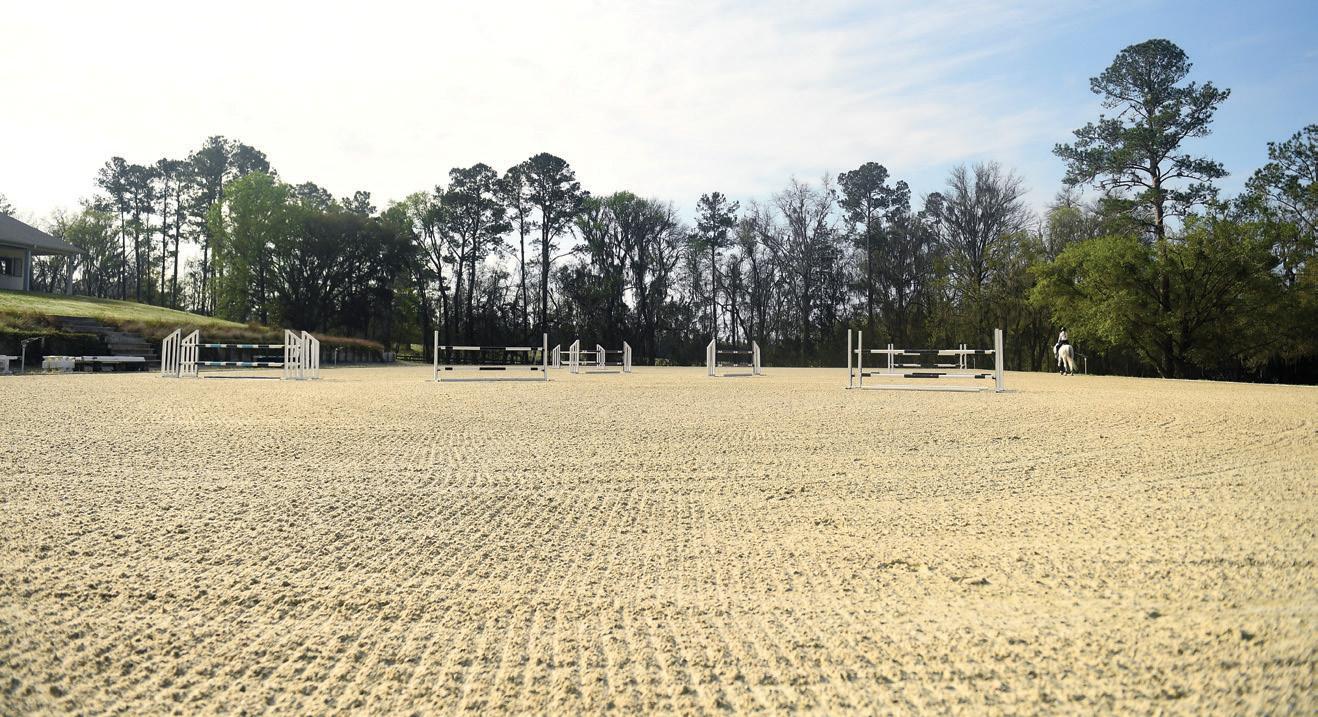
“It’s important to have an irrigation system that waters the arena consistently everywhere,” says Wordley. “Water is the binding agent for the sand so that each foot fall is the same and consistent.”
Geographic location and weather conditions can be determining factors in how much water needs to be added to or taken away from the arena. Ideally, the timing and the amount that the irrigation system is used can be modified as needed depending on the natural levels of precipitation and evaporation.
“Typically, we’ll have our irrigation system go off twice,” says Wordley of his routine at his base in Ocala, FL. “We will irrigate in the early evening and then again at five or six o’clock in the morning so that the moisture content is high enough for the day’s work.”
PHOTOS, UPPER LEFT AND BOTTOM: KATHERINE
CLOCKWISE FROM TOP LEFT:
Wordley and Martin advise to drag the arena at least once per day, ideally after watering it; Having consistent quality footing throughout the arena that both gives to and holds up to impact is an essential component of every ride to keep horses sound and happy; Many irrigation systems spray water over the top of the arena to add moisture, but the key is to wet the arena evenly; Professionally laser grading the arena once a year will keep it in top condition for years to come
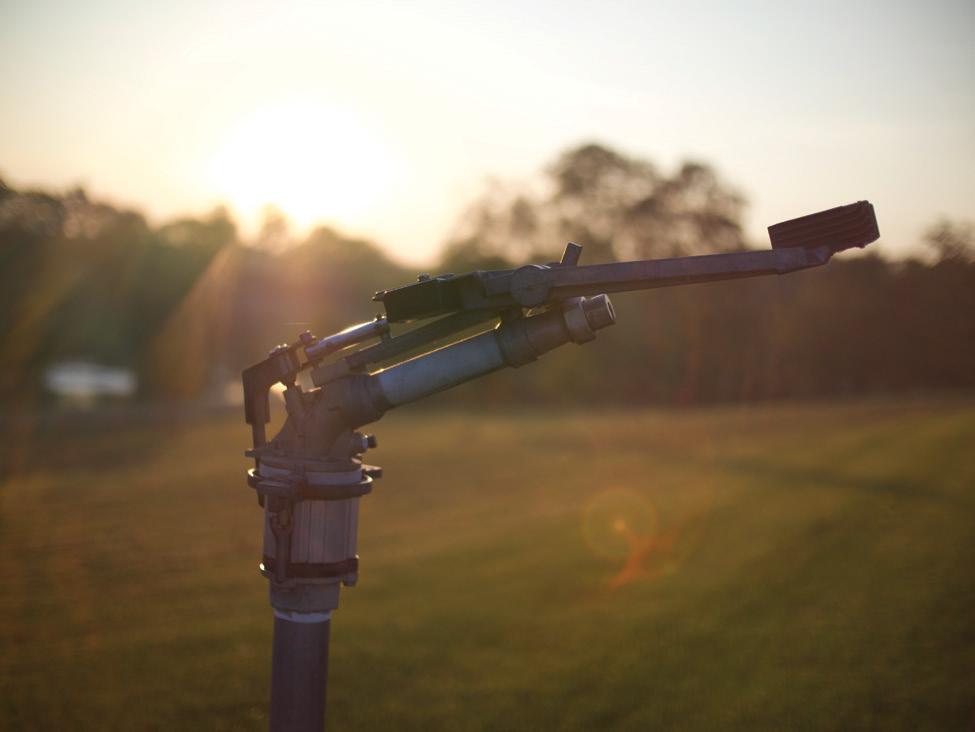


ABOUT THE EXPERTS
SHARN WORDLEY has competed at numerous venues across 22 countries, giving him a strong foundation for quality arena conditions.
He was previously ranked among the top 50 show jumping riders in the world and has represented his home
country of New Zealand at the highest level of the sport, including at the 2008 Beijing Olympic Games and the 2018 FEI World Equestrian Games in Tryon, NC.
CRAIG MARTIN is one of a select list of professionals worldwide
who are qualified as a Fédération Équestre Internationale (FEI) Approved Footing Specialists. In addition, he operates a successful real estate business and is a competitive Ironman and ultra-marathon athlete.
Together, they have
leveraged their decades of athletic experience and expertise to found Wordley Martin, specializing in creating equestrian arena architecture, construction, installation, and footing products for a personalized, ideal riding environment. With an exceptionally high
standard of execution, Wordley Martin has become the top choice of athletes and owners in the three Olympic disciplines of show jumping, dressage, and eventing. Learn about building your own Wordley Martin arena at WordleyMartin.com/ Welcome

PHOTO: STARSHIP FARMS MEDIA
Understanding the functionality of each of the drag features, including the rollers, ripper teeth, and spring teeth is important to properly maintain the arena footing
DRAGGING
Dragging the arena helps keep the footing even after the sand gets jostled around from riding, lunging, and other regular use. Therefore, the frequency of dragging somewhat depends on the amount of use the arena footing sustains. For example, a private arena where 10 horses are worked each day might only need to be dragged once in the morning ahead of the day’s activities. An arena with the same footing at a busy horse show should be dragged more often, usually a few times over the course of the day. More intense jumping and turning causes horses to dig in to the footing more when they step, so the type of riding in the arena can also affect the need to drag.
“We recommend that everyone drag their arenas at least once per day,” says Wordley. “The best thing to do is to drag after the irrigation system has watered the footing. Having that moisture will give you the most optimal resulting texture. Dragging when the footing doesn’t have enough water can make it feel a little looser and potentially not hold up as well to more demanding riding use.”
Wordley and Martin have developed their own customized series of drags with features they find essential to preparing the footing. Their drags feature an initial roller, followed by ripper teeth, spring teeth, and a final roller. Martin advises that the rollers need to be parallel to achieve the desired consistent result. The ripper teeth (metal protrusions that can be raised or lowered) cut through the footing to break it up. Then, the spring teeth help realign the sand before the second roller smooths everything over.
“You want to be able to allow the ripper teeth to groom into the footing approximately between one and a half to two inches,” says Martin of the ideal drag set-up. “The spring teeth should be set at about a 45-degree angle relative to the sand footing. You
also want to have decent pressure on the spring teeth so they’re going into the footing and they leave a nice aesthetic finish.”
The drag itself needs regular maintenance in order to function correctly. Wordley and Martin recommend adding grease to the grease points on the drag one to two times per month. To help keep everything in good working condition, it’s also a good idea to spray off the drag in between uses to avoid any build-up. Finally, the ripper teeth will wear down, so it’s important to change them every two to three years as needed.
ANNUAL UPKEEP
Even when the ring is consistently watered and dragged correctly, it needs additional attention on a regular basis to remain in the best condition possible. Laser grading, a more serious service provided by footing and construction professionals, achieves the most level footing. With laser grading, any subtle unevenness that might not be noticeable to the naked eye can be detected and adjusted, making this an important annual investment in addition to regular routine maintenance.
“Sand moves around due to factors like the rain, the tractor, and the horses, so it’s really important to laser grade your arena at least once a year,” adds Wordley. “For our clients, we like to schedule this along with a rototiller grooming of the arena to keep everything in top-notch condition.”
If you’ve put a lot of time, money, and effort into creating an ideal riding environment, it is worth investing in this service to make sure you’re getting the most out of every ride year after year.
For information about troubleshooting arena difficulties, stay tuned for the next part of our Ask the Arena and Footing Experts series on The Plaid Horse website.





